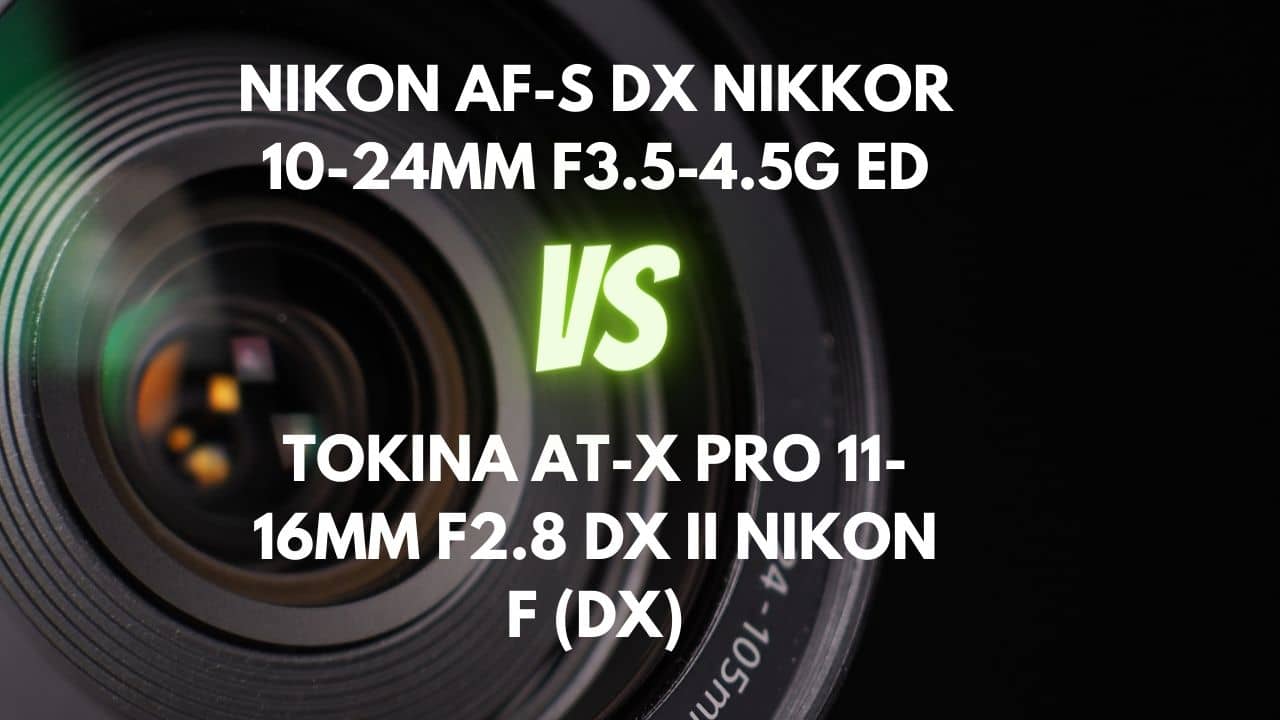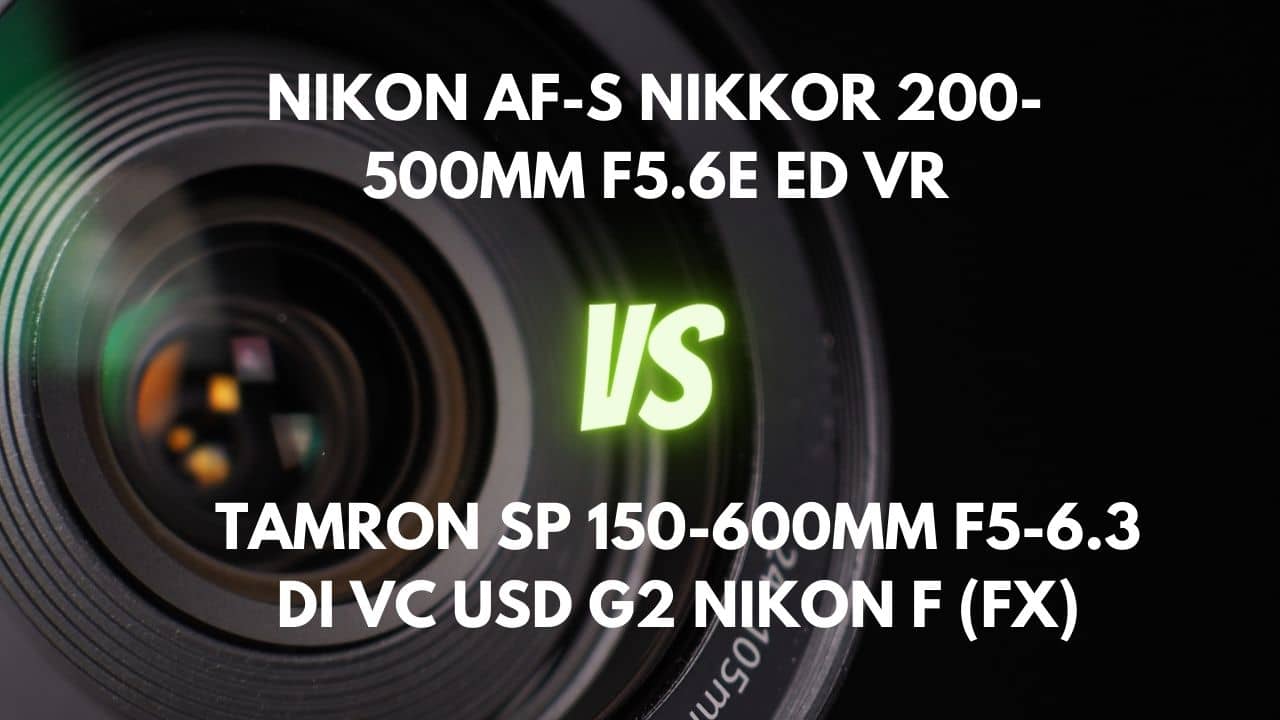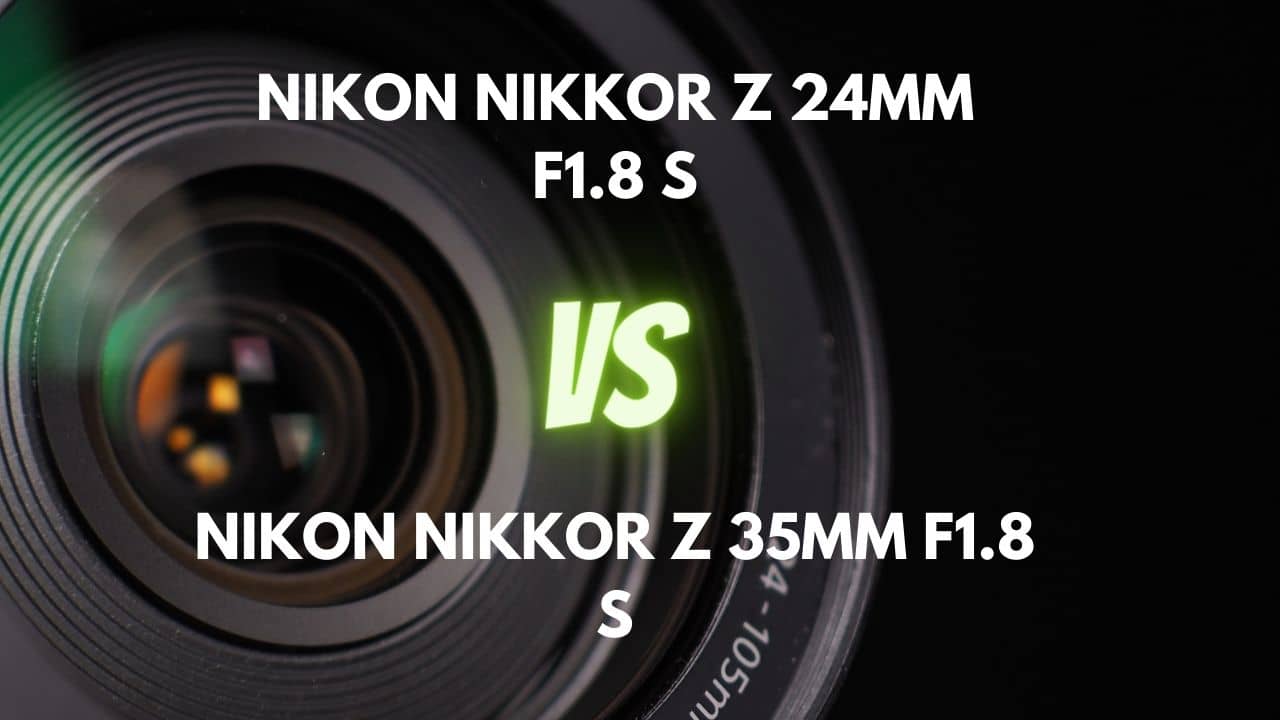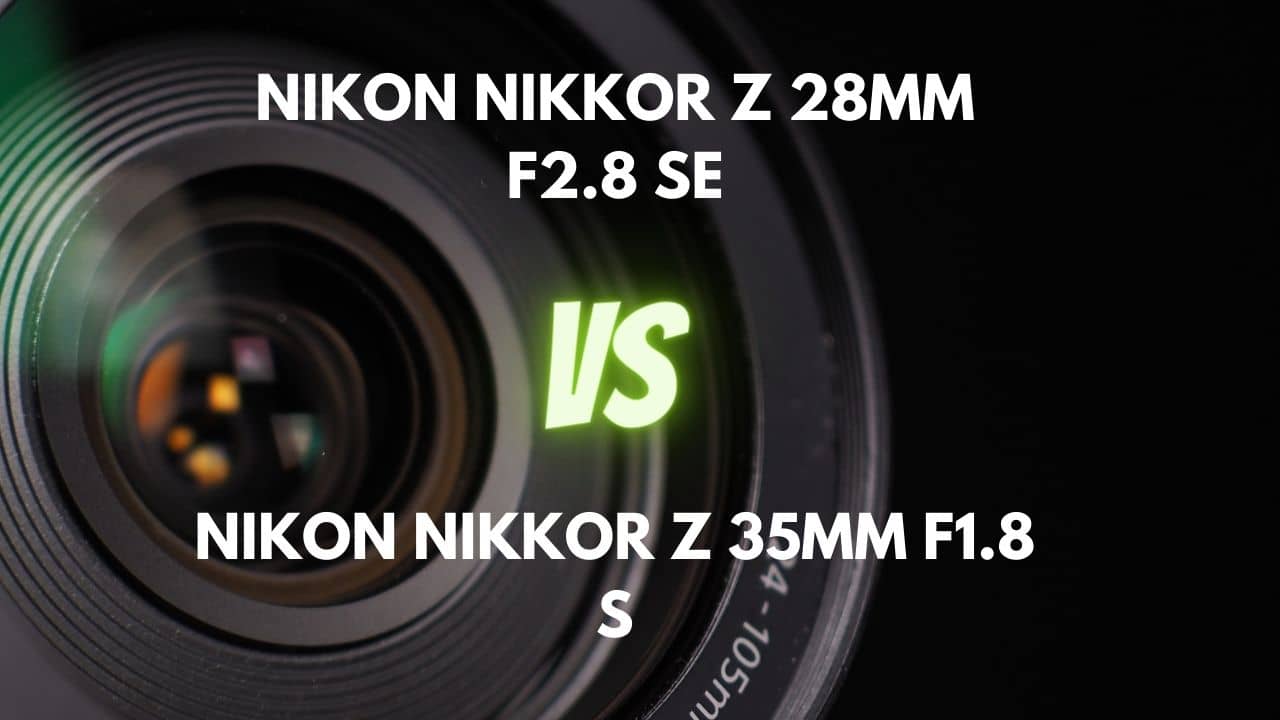Step into the captivating realm of wide-angle photography, where sweeping landscapes, enchanting cityscapes, and immersive interiors take center stage. As photographers, we are always on the lookout for the perfect lens to help us capture these awe-inspiring scenes.
In this article, we’ll dive into an in-depth comparison of two popular wide-angle lenses: the versatile Nikon AF-P DX NIKKOR 10-20mm F4.5-5.6G VR and the sharp and precise Tokina AT-X Pro 11-16mm F2.8 DX II Nikon F (DX).
We’ll explore their strengths and weaknesses, compare their performance in various aspects of photography, and offer insights from a landscape photographer’s perspective. Join us on this exciting journey to discover which of these lenses best fits your artistic vision and can ultimately elevate your wide-angle photography to new heights.
Overview
| Nikon AF-P DX NIKKOR 10-20mm F4.5-5.6G VR | Tokina AT-X Pro 11-16mm F2.8 DX II Nikon F (DX) | |
|---|---|---|
| Max Aperture | F4.5-5.6 | F2.8 |
| Aperture Type | Variable | Fixed |
| Focal Range (mm) | 10-20 | 11-16 |
| Mount Type | Nikon F (DX) | Nikon F (DX) |
| Zoom Ratio (X) | 2 | 1.5 |
The Nikon DX 10-20mm f/4.5-5.6 and the Tokina 11-16mm f/2.8 are both wide-angle zoom lenses designed for Nikon F (DX) mount cameras. However, they have some key differences in terms of aperture, focal range, and zoom ratio.
The Nikon DX 10-20mm f/4.5-5.6 has a variable aperture, which means the maximum aperture changes from f/4.5 to f/5.6 as you zoom in. It has a focal range of 10-20mm and a 2x zoom ratio. On the other hand, the Tokina 11-16mm f/2.8 has a fixed aperture of f/2.8 across its entire focal range of 11-16mm, with a 1.5x zoom ratio.
A wide aperture allows for better low light performance and a shallower depth of field, creating a more blurry background. With its fixed aperture, the Tokina lens offers a wider maximum aperture than the Nikon lens, making it more suitable for low light situations and providing more creative control over depth of field.
The Nikon lens, however, offers a broader focal range, providing more versatility when composing shots. Its variable aperture allows for a lighter and more affordable lens, which might be appealing to hobbyist photographers.
In conclusion, the Tokina 11-16mm f/2.8 lens is superior in terms of low light performance due to its fixed, wider aperture. However, the Nikon DX 10-20mm f/4.5-5.6 lens offers a more versatile focal range and is more affordable and lightweight.
Design and Ease of Use
| Nikon AF-P DX NIKKOR 10-20mm F4.5-5.6G VR | Tokina AT-X Pro 11-16mm F2.8 DX II Nikon F (DX) | |
|---|---|---|
| Diameter x Length (mm) | ⌀77×73mm | ⌀84×89mm |
| Weight (gr) | 230 | 550 |
| Filter Thread (mm) | 72 | 77 |
| Zoom Method | Rotary (extending) | Rotary (internal) |
| Zoom Lock | No | No Zoom |
| Distance Scale | No | Yes |
| DoF Scale | No | No |
| Hood Supplied | Yes | Yes |
| Hood Code | HB-81 | BH-77B |
The Nikon DX 10-20mm f/4.5-5.6 and the Tokina 11-16mm f/2.8 differ in size, weight, and zoom method.
The Nikon DX 10-20mm f/4.5-5.6 lens is more compact and lightweight, measuring 77x73mm in diameter and length, and weighing just 230 grams. Its zoom method is rotary (extending), meaning the lens physically extends when you zoom in or out. This more straightforward design can lead to lower prices and potentially increased durability, but it may make the lens more difficult to weather-seal and could affect the camera’s balance while zooming.
In contrast, the Tokina 11-16mm f/2.8 lens is larger and heavier, measuring 84x89mm and weighing 550 grams. Its zoom method is rotary (internal), which means the lens elements move within the lens barrel and the lens doesn’t change its physical size when zooming. This design allows for more consistent camera balance during shooting, easier weather sealing, and a more compact overall size. However, it may result in a more complex design, potentially higher prices, and a heavier lens due to the additional internal mechanics.
In conclusion, the Nikon lens offers the advantage of being more compact and lightweight, making it more portable and easier to handle for extended periods. However, the Tokina lens features an internal rotary zoom method, which can provide better weather sealing and more consistent camera balance during shooting. If portability and weight are crucial factors, the Nikon lens might be the superior choice. However, if weather sealing and consistent balance are more important, the Tokina lens could be the better option.
Lens Mount and Barrel
The Nikon DX 10-20mm f/4.5-5.6 and the Tokina 11-16mm f/2.8 differ in their lens mount construction, which can indirectly affect distortion.
The Nikon lens features a plastic lens mount, which is a lighter and more affordable option than metal mounts. This choice is in line with the lens’s entry-level and lightweight nature. While the lack of a rubber gasket around the mount might make it more susceptible to dust and moisture, the overall build quality of the lens is reliable, and it is backed by a five-year warranty.
On the other hand, the Tokina lens has a bright-chromed, brass lens mount that feels different when mounting due to the chrome finish. This metal mount provides a sturdier construction compared to the plastic mount of the Nikon lens. The presence of a rubber gasket, even without official weather sealing, adds some protection against dust and moisture.
The lens mount materials can influence the overall build quality and durability of the lenses, which in turn may impact lens performance, including distortion. In this case, the Tokina lens with its metal mount and rubber gasket has a more robust construction.
Weather Sealing
Comparing the weather sealing of the Nikon DX 10-20mm f/4.5-5.6 and the Tokina 11-16mm f/2.8 reveals some differences in their ability to withstand challenging weather conditions.
The Nikon lens lacks weather sealing, meaning it does not have protective measures like gaskets or internal seals to prevent dust, moisture, or light water splashes from entering the lens. This could be a concern for photographers shooting in extreme humid or wet environments, as it may compromise the lens’s durability and performance.
On the other hand, the Tokina lens does not have an official weather sealing, but it does feature a rubber gasket surrounding the metal mount at the rear, providing some protection against dust and moisture. However, the lens still lacks internal seals at the rings, switches, and front of the barrel. Tokina also states on their website that the lens is not waterproof or water-resistant.
In conclusion, neither of these lenses is fully weather-sealed, but the Tokina lens offers slightly better protection with its rubber gasket around the metal mount. If weather sealing is a priority for you, the Tokina lens is a better choice, although it is still not entirely waterproof or water-resistant. For optimal protection, you may want to consider other lenses that are specifically designed with full weather sealing or use additional protective gear to safeguard your equipment in challenging environments.
Rings
The Nikon lens has two rings – a large zoom ring and a slim manual focus ring. The zoom ring is covered with a textured rubber grip, providing a comfortable hold and easy operation. The manual focus ring, however, is narrow and located close to the front element, which might make it slightly challenging to manipulate.
The lens allows you to override autofocus by simply rotating the focus ring at any time, offering greater control. Despite its smooth rubberized design, the lens lacks a windowed distance scale and depth-of-field indicator on the focus ring, as well as a zoom lock switch.
In contrast, the Tokina lens features a well-positioned, strongly ribbed zoom ring at the rear and a smooth focus ring at the front. Both rings provide a good balance of resistance and smoothness, ensuring precise adjustments. The zoom range is well spread out on the zoom ring, allowing for easy composition setting. The lens has a windowed distance scale but lacks a depth-of-field indicator and a zoom lock switch.
In conclusion, both lenses offer unique advantages in terms of ring design. The Nikon lens provides a comfortable, easy-to-use zoom ring with a textured rubber grip, while the Tokina 11-16mm f/2.8 lens offers a well-positioned zoom ring and a smoother, more precise focus ring with a windowed distance scale. Considering the overall control, precision, and ergonomics, the Tokina lens has a superior ring design, making it an excellent choice for photographers who prioritize fine control and ease of use.
Switches/Buttons
The Nikon lens lacks any switches on the barrel, which may impact compatibility with certain Nikon cameras. To change focus modes, users need to use the camera’s switch. Additionally, there is no physical Vibration Reduction (VR) switch, meaning users must navigate their camera’s menus to enable or disable this feature. Despite the absence of an AF/MF switch, manual override and fully manual focusing are still accessible through an electronically coupled focus ring.
In contrast, the Tokina lens does not feature traditional switches or buttons. Instead, it utilizes a unique One-touch Focus Clutch mechanism that allows for seamless switching between auto-focus and manual focus by simply sliding the focus ring forward or backward. This innovative mechanism streamlines focus adjustments and eliminates the need for additional switches. However, there are no switches or buttons available for features like focus limiting or image stabilization.
In conclusion, the Tokina lens provides a superior switch/button experience with its innovative One-touch Focus Clutch mechanism, offering an intuitive and user-friendly way to switch between focus modes. While the Nikon does allow for manual focus adjustments via an electronically coupled focus ring, the lack of physical switches may make it less convenient for photographers who prefer easy access to focus and VR controls.
Filter Thread
The Nikon lens features a 72mm metal filter thread at the front, encircling the front element. This filter thread size allows for easy use with conventional filters and ensures compatibility with a wide range of filters. Polarizing or graduated filters can be easily used, as the filter thread doesn’t rotate during autofocus, which is a common feature in modern lenses.
On the other hand, the Tokina lens has a 77mm plastic filter thread sitting close to the front glass element. Similar to the Nikon lens, the filter thread does not rotate on focus, allowing for hassle-free use of filters. However, photographers should exercise caution when using thicker filters to avoid potential vignetting or darkening of corners.
In conclusion, the Nikon lens has a slightly superior filter thread due to its metal construction and smaller size. The metal filter thread offers enhanced durability and reliability, while the 72mm size ensures compatibility with a wide range of filters. The Tokina lens still provides a good filter thread experience, but the plastic construction may be less durable, and the larger 77mm size may require more expensive filters or increase the risk of vignetting when using thicker filters.
Lens Hood
The Nikon lens comes with a large petal-type plastic lens hood included in the box. It features a bayonet mount, allowing for quick and easy attachment and detachment. When not in use, the hood can be reversed over the barrel for convenient storage. With its ergonomic bevel design, the hood can be smoothly rotated to adjust the direction of light and better control flare.
On the other hand, the Tokina lens includes the BH-77B lens hood in the box. This hood has a ribbed interior, which helps prevent light reflections from entering the lens and reduces flare. The exterior is made of plastic with an ergonomic bevel, making it easy to attach and detach. The hood can also be rotated smoothly to accommodate different shooting angles.
In conclusion, both lens hoods offer good protection and flare control, but the Tokina lens hood has a slight edge due to its ribbed interior design. This design helps reduce light reflections more effectively than the Nikon lens hood. However, both hoods provide an ergonomic bevel design, ensuring easy and smooth rotation for optimal light control.
Focusing and Optical Stabilization
| Nikon AF-P DX NIKKOR 10-20mm F4.5-5.6G VR | Tokina AT-X Pro 11-16mm F2.8 DX II Nikon F (DX) | |
|---|---|---|
| Autofocus | Yes | Yes |
| AF Motor | Stepper motor | Micromotor |
| Rotating Front Element | Does not rotate on focusing | Does not rotate on focusing |
| Min Focus Distance | 0.22m | 0.3m |
| Max Magnification (X) | 0.17 | 0.09 |
| Full-Time Manual Focus | Yes | Yes |
| Focus Method | Internal | Internal |
Focusing Performance
The Nikon lens boasts a fast and quiet autofocus performance, thanks to its AF-P stepper motor. This feature minimizes jitter and shudder in handheld video, resulting in smoother footage. With its convenient manual focus override ring, users can make sudden adjustments as needed. The lens performs well in low-light situations and offers precise, smooth manual focus action. However, it does produce a slight hum during focusing, which may be noticeable in quiet environments.
On the other hand, the Tokina 11-16mm lens exhibits mixed autofocus performance. Some users report it as reasonably fast and quiet, while others find it slower and noisier compared to other brands. The lens employs a micro-motor AF drive, which is not the fastest and often requires a second focus adjustment.
Although it lacks full-time manual focus operation, the manual focus ring is smooth and offers a wide range of adjustment. The lens features an internally focusing design, maintaining a constant length regardless of focus and zoom settings, and the front element remains stationary during focusing.
In conclusion, the Nikon 10-20mm lens delivers superior focusing performance due to its fast, quiet autofocus, and convenient manual focus override ring. While the Tokina 11-16mm lens offers satisfactory autofocus performance, it falls short when compared to the Nikon lens.
Optical Stabilization
The Nikon lens features built-in optical stabilization, which allows you to shoot at shutter speeds up to 3.5 stops slower without causing blurring due to camera shake. This is especially helpful for handheld shooting in low-light conditions, where a larger-aperture lens might not be available.
The lens’s vibration reduction (VR) system operates silently, enabling you to shoot at slower shutter speeds, typically around 1/10 of a second, and even as slow as 1/6 of a second. However, using slower shutter speeds might yield mixed results in terms of image sharpness.
In contrast, the Tokina lens does not have optical stabilization. This means that you might need to rely on other techniques, such as using a tripod, a faster shutter speed, or a larger aperture, to minimize camera shake and achieve sharp images when using this lens.
In conclusion, the Nikon 10-20mm lens offers superior optical stabilization compared to the Tokina 11-16mm lens, which lacks this feature. While optical stabilization is not as critical for wide-angle lenses as it is for telephoto lenses, having it can be beneficial in certain situations, such as when shooting handheld in low-light conditions or recording video.
Image Quality
| Nikon AF-P DX NIKKOR 10-20mm F4.5-5.6G VR | Tokina AT-X Pro 11-16mm F2.8 DX II Nikon F (DX) | |
|---|---|---|
| Special Elements | 3 aspherical + Super Integrated Coating | 2 aspherical elements and 1 SD element |
| Diaphragm Blades | 7 | 9 |
Aberration
The Nikon lens exhibits noticeable chromatic aberration, especially near the edges of the frame when shooting wide open at 10mm. However, camera JPEG engines can effectively remove most of it, and it can also be addressed in post-processing. This lens doesn’t suffer significantly from coma, but spherochromatism can cause colored fringes on out-of-focus highlights in some situations, although this is not a major issue.
On the other hand, the Tokina lens displays pronounced chromatic aberration, with strong green and purple fringing on contrasting edges, particularly on window panes. This aberration persists throughout the focal length range, resulting in images that appear less sharp. When shooting with strong direct light sources, such as the sun or moon, this lens is prone to a significant coma effect, which is difficult to avoid. Spherical aberration near the edges is also noticeable but can be somewhat corrected in post-processing.
In conclusion, the Nikon lens has a slightly better aberration performance compared to the Tokina lens. While both lenses exhibit chromatic aberration, the Nikon lens’s issues are less severe and more manageable in post-processing. The Nikon lens also performs better in terms of coma and spherochromatism, making it a more appealing choice for photographers who prioritize minimal aberration in their images.
Sharpness
The Nikon DX 10-20mm f/4.5-5.6 delivers good to very good sharpness performance, with a notably even performance at 10mm from wide open up to f/14, and peaking around f/8-f/11 at other focal lengths such as 12, 14, 16, and 18mm. However, the edge and corner sharpness at 20mm can be somewhat uninspiring and a little poor. Despite this, the center sharpness remains very good even when shooting wide open throughout most of the zoom range. It is important to note that the sharpness is affected by diffraction at f/11 and smaller apertures.
On the other hand, the Tokina 11-16mm f/2.8 is generally very sharp, featuring excellent center sharpness and decent corner sharpness. Sharpness at wide open apertures varies, with some lenses being tack sharp and others appearing soft with noticeable chromatic aberration. Stopping down usually improves sharpness, with the sharpest aperture differing depending on the specific lens.
In conclusion, the Tokina lens offers superior sharpness performance compared to the Nikon lens. While both lenses are capable of delivering good sharpness, the Tokina lens consistently provides excellent center sharpness, whereas the Nikon lens exhibits less impressive edge and corner sharpness at certain focal lengths. For photographers seeking optimal sharpness in their images, the Tokina lens is the more appealing choice.
Bokeh Quality
The Nikon DX 10-20mm f/4.5-5.6 produces a restrained and subjectively good bokeh, but as an ultra-wide to wide zoom lens with a slow aperture, achieving substantial bokeh can be challenging and, at times, the result may appear somewhat nervous. Nevertheless, the lens is capable of producing decent bokeh quality when careful subject selection, camera settings, and composition are employed.
On the other hand, the Tokina 11-16mm f/2.8 exhibits disappointing bokeh quality, particularly when there is a narrow depth of field. The bokeh is often described as harsh and distracting, which can be a letdown. However, it is essential to consider that, for an ultra-wide-angle lens, blurry backgrounds are not the main focus.
In conclusion, while neither lens is designed specifically for bokeh, the Nikon lens offers a slightly better bokeh quality compared to the Tokina lens. However, it is crucial to keep in mind that bokeh is not the primary purpose of wide-angle lenses, and their strengths lie in capturing broader scenes and emphasizing depth of field.
Flare/Ghosting
The Nikon DX 10-20mm f/4.5-5.6 is quite impressive in handling flare and ghosting, exhibiting very little tendency for reduced contrast or the creation of artifacts in images. Even when the sun is in the frame, this lens outperforms other lenses, including the fixed prime FX Nikkor 20mm AF-S f/1.8 lens. Moreover, side light hitting the front glass does not pose a significant issue, making it a reliable choice for various lighting conditions.
On the other hand, the Tokina 11-16mm f/2.8 struggles with flare and ghosting, particularly when shooting into bright light sources like the sun. This flare can be challenging to remove during post-processing, although some photographers may find the flaring effect desirable for enhancing the sun’s appearance in their photos. To avoid flare issues, it’s best to consider purchasing the lens from a place that offers returns or exchanges if it does not meet your expectations.
In conclusion, the Nikon 10-20mm lens demonstrates superior flare and ghosting performance compared to the Tokina 11-16mm lens.
Vignetting
The Nikon DX 10-20mm f/4.5-5.6 exhibits considerable vignetting at 10mm, especially when shooting wide open. However, the vignetting improves at 15mm and 20mm. Although it is most pronounced at 10mm across all focal lengths, vignetting can be corrected in post-processing software programs. In real-life circumstances, vignetting is less of an issue than it may appear in sample images.
On the contrary, the Tokina 11-16mm f/2.8 shows very little vignetting, making it a more consistent performer in this aspect.
Vignetting is generally more important at shorter focal lengths for wide-angle lenses, as the lens takes in a wider field of view, and light rays have to travel farther to reach the corners of the sensor. Some photographers appreciate a certain level of vignetting for artistic purposes, while others find it undesirable. If you prefer less vignetting, it can be corrected using post-processing software or by stopping down the aperture.
In conclusion, the Tokina 11-16mm lens outperforms the Nikon 10-20mm lens in terms of vignetting.
Distortion
The Nikon DX 10-20mm f/4.5-5.6 exhibits barrel distortion, more pronounced at the shortest focal length of 10mm, decreasing as you zoom in and becoming almost non-existent at the longer end. The distortion at 10mm is noticeable but remains a good result for a consumer lens of this class.
On the other hand, the Tokina 11-16mm f/2.8 has some barrel distortion at 11mm but transitions to almost no distortion at 14-16mm. The distortion is well-controlled compared to many competing lenses in this focal length range. However, ultra-wide angles may cause people to appear perspective-distorted, requiring caution for group photos and environmental portraits.
In real-world shooting, distortion is manageable and can be corrected in-camera for JPGs or through software like Lightroom Classic for RAW format. However, wide-angle lenses are expected to have distortion, and some correction might be necessary for optimal results.
In conclusion, the Tokina 11-16mm lens offers better-controlled distortion, particularly at longer focal lengths, compared to the Nikon 10-20mm lens.
Final Verdict
The Nikon DX 10-20mm f/4.5-5.6 offers a more versatile focal range, allowing you to capture a wider variety of landscapes, from sweeping vistas to more intimate scenes. This versatility makes it an appealing choice for landscape photographers who desire flexibility in their compositions.
On the other hand, the Tokina 11-16mm f/2.8 provides superior sharpness performance, which is essential for landscape photography. Capturing fine details in landscapes is crucial, and the excellent center sharpness of the Tokina lens ensures that your images will have outstanding clarity.
Distortion control is another important factor for landscape photography, as it can impact the natural lines and shapes in your images. The Tokina 11-16mm lens offers better-controlled distortion, particularly at longer focal lengths, ensuring that your landscape images appear more true-to-life and free of unwanted distortion effects.
Lastly, vignetting can impact the evenness of illumination in your landscape images. The Tokina 11-16mm lens outperforms the Nikon 10-20mm lens in terms of vignetting, providing more uniform brightness across the frame.
In conclusion, for wide-angle landscape photography, both lenses have their merits. The Nikon 10-20mm lens offers a more versatile focal range, which can be beneficial for capturing various types of landscapes. However, the Tokina 11-16mm lens excels in crucial aspects like sharpness, distortion control, and vignetting, making it a more appealing choice for landscape photographers who prioritize image quality. Keep in mind that the Tokina lens is heavier and more expensive, so you should weigh these factors against your specific needs and preferences when making your decision.






